Snake plants, known as Mother-in-Law’s Tongue, are favored houseplants for their distinctive look and low maintenance requirements. They are highly adaptable and thrive under various indoor conditions, making them appealing to new and experienced plant enthusiasts.
While snake plants are easy to care for, it’s crucial to understand certain tips to keep them healthy and thriving.
Taking proper care of your plants means understanding watering needs, light requirements, and potential problems that could arise. Learning these aspects ensures vibrant snake plants that enhance living spaces for years.
1) Snake Plants Are Easy To Care For And Hard To Kill
Snake plants are known for their resilience and low-maintenance nature. They can thrive in various conditions, making them perfect for new plant owners or those with busy lifestyles.
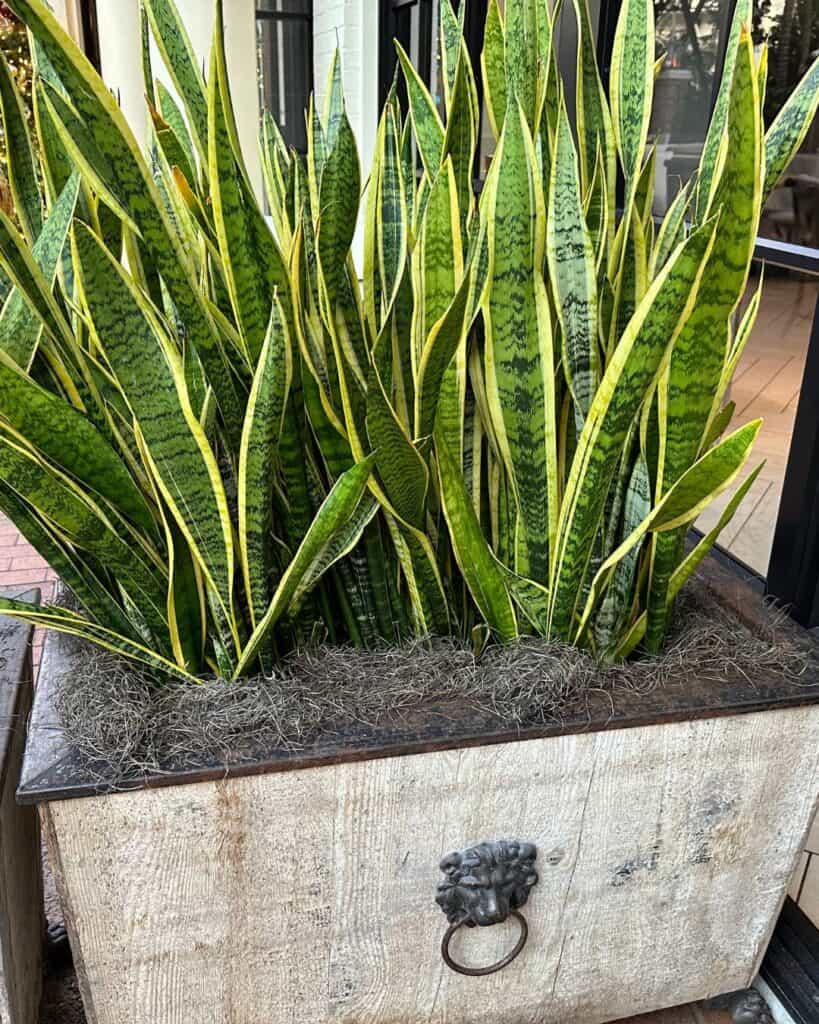

These plants can tolerate neglect and still bounce back quickly. They don’t need frequent watering and can survive in low-light environments.
Snake plants are also resistant to many common plant pests and diseases. This hardiness means they can often recover from care mistakes that might kill other houseplants.
Because they can adjust to different places inside, they are great for both offices and homes. With just a little work, snake plants can stay healthy and grow for a long time.
2) Snake Plants Are Now Reclassified As Dracaena
Snake plants have a new scientific name. They are now part of the Dracaena genus. This change happened because of new research into plant genetics.


The old name for snake plants was Sansevieria. Scientists found that these plants are closely related to Dracaena species. This led to the reclassification.
Snake plants are now officially Dracaena. For example, the common snake plant is now Dracaena trifasciata. Other varieties have similar new names.
This change affects how snake plants are classified in botany. It doesn’t change how to care for these plants. Snake plant owners don’t need to worry about changing their care routines.
3) Many Snake Plants Varieties And Cultivars Exist
Snake plants come in many shapes and sizes. Check out our article on 35 rare, unique varieties. The most common type is Dracaena trifasciata, also known as mother-in-law’s tongue.
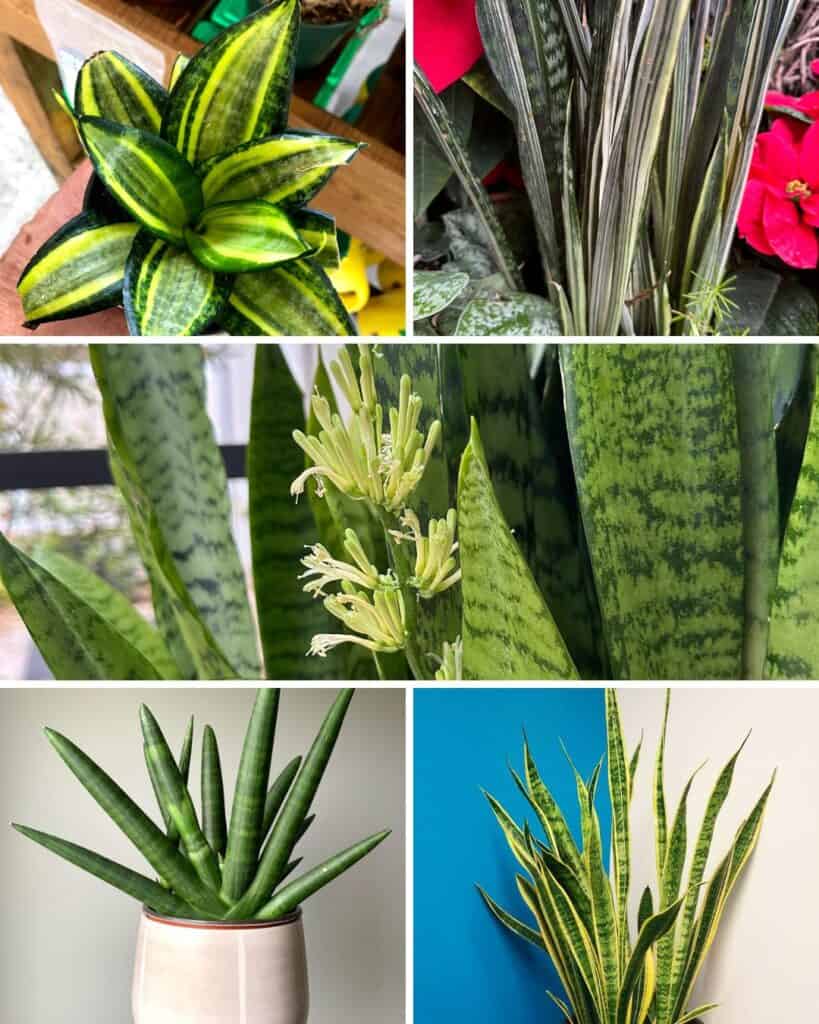

There are several popular varieties of snake plants to consider. The Laurentii variety flaunts green leaves bordered with yellow edges, while the Moonshine snake plant showcases pale, silvery-green foliage.
The Black Gold variety is noted for its dark green leaves framed by golden edges. For those seeking a more compact option, the Hahnii, also known as the Bird’s Nest snake plant, remains small in size.
Interestingly, some snake plants have the ability to bloom. The Kenya Hyacinth, for instance, is a rare flowering type found in the forests of East Africa.
With so many choices, snake plant owners can find a variety that fits their space and style. Each type has unique leaf patterns and colors, making them interesting additions to any plant collection.
4) Snake Plants Are Slow Growers
Snake plants are known for their slow growth rate. This characteristic makes them ideal for indoor spaces where rapid growth isn’t desired.


- On average, a snake plant may only produce 2-4 new leaves per growing season. This slow growth rate is a result of their adaptation to the harsh environments of their native West Africa.
- Snake plants can thrive in low light conditions, contributing to their slow growth.
- They efficiently use available light to photosynthesize, conserving energy for essential functions.
- While slow growth may seem disappointing, it benefits plant owners. Snake plants require less frequent repotting and maintenance compared to faster-growing houseplants.
- To encourage healthy growth, provide bright indirect light and water sparingly.
- Remember, even with optimal care, snake plants will maintain their naturally slow growth rate.
5) Snake Plants Flower
Snake plants can indeed produce flowers, although this is quite rare. They may go years without blooming, which often comes as a surprise to their owners when it finally happens.
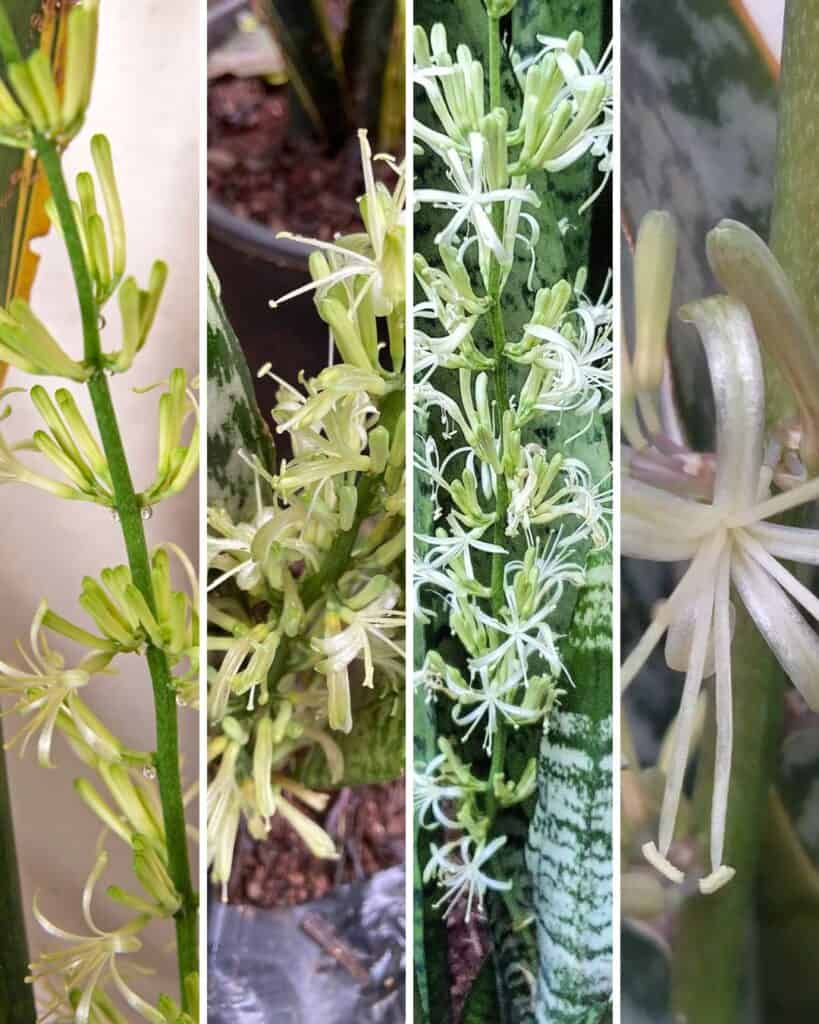

Snake plants most often bloom in the spring, producing small, greenish-white, fragrant flowers on tall stalks.
When snake plants flower, it usually means the plant is experiencing some stress. This could happen if the plant is root-bound or if it has been exposed to changes in light or temperature.
Snake plant flowers are a rare treat for plant owners. To increase the chances of blooming, place the plant in a spot with bright, indirect light.
While flowers are beautiful, they use up a lot of the plant’s energy. After blooming, the plant may need extra care and nutrients to recover.
6) Snake Plants Were Part Of The NASA “Air Purifying” Study
NASA included snake plants in their research on indoor air purification. The study aimed to find plants that could clean air in space stations.


- Snake plants, also known as mother-in-law’s tongue, stood out in the results.
- They remove harmful chemicals from the air, like formaldehyde and benzene.
- Snake plants are special because they release oxygen at night, unlike most plants that release oxygen during the day.
- They use a process called Crassulacean Acid Metabolism (CAM), which is common in succulents and cacti. This process allows them to conserve water by opening their stomata at night instead of during the day.
- While it is true that snake plants release oxygen at night, the idea that they store carbon dioxide in their cells and use it later to make oxygen is misleading.
- In reality, snake plants take in carbon dioxide at night during CAM photosynthesis and store it as an acid. This stored carbon dioxide is then used during the day for photosynthesis to produce oxygen.
- Although snake plants contribute to oxygen production at night, the amount of oxygen produced by a single plant is not enough to significantly impact indoor air quality or oxygen levels.
- The NASA study helped show why snake plants are popular indoor plants today.
7) Repotting Snake Plants Usually Isn’t Needed
Snake plants are known for their low-maintenance nature. They don’t need frequent repotting due to their slow growth rate.
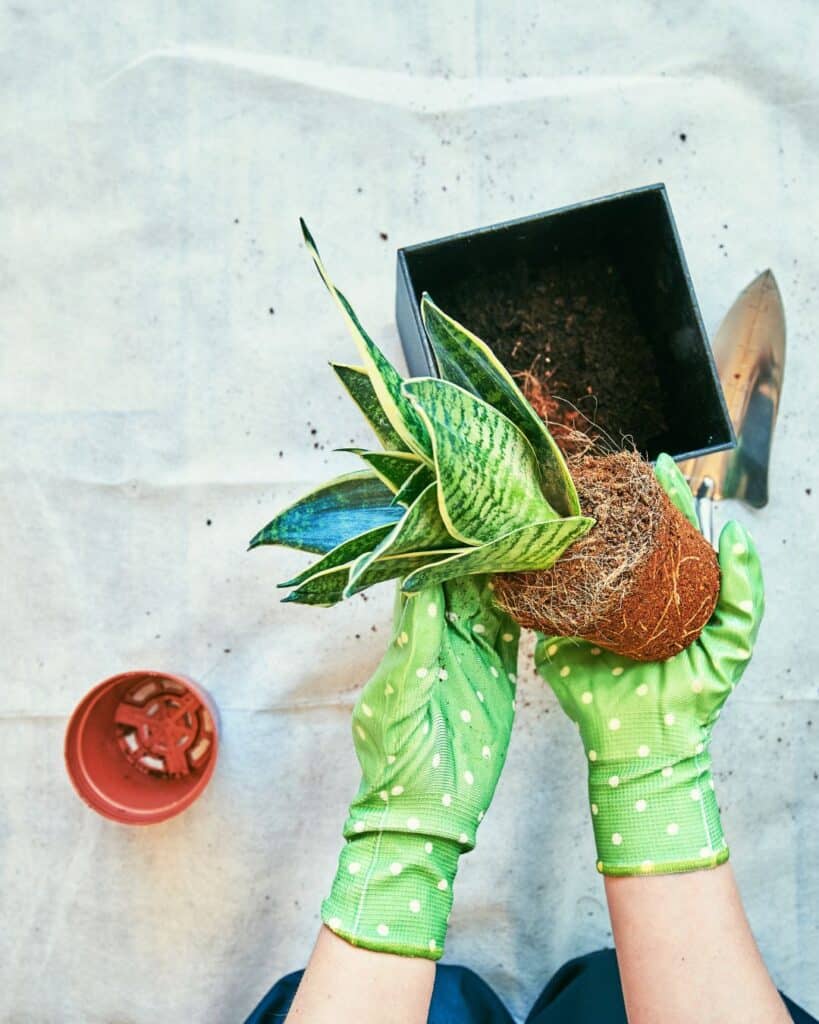

Snake plants typically require repotting only once every 2-3 years. This feature makes them an excellent choice for individuals who are either busy or new to gardening.
Signs that a snake plant needs repotting include roots growing out of drainage holes or the plant becoming too large for its current pot. If the plant looks healthy, it’s best to leave it be.
When repotting is necessary, choose a pot just slightly larger than the current one. Snake plants prefer to be slightly root-bound, which helps prevent overwatering issues.
Use a well-draining potting mix designed for succulents when repotting. This ensures proper drainage and prevents root rot, a common problem for overwatered snake plants.
8) It’s Easy To Grow Snake Plants From Cuttings
Snake plants are simple to propagate, making it easy to expand your collection. There are several methods to grow new plants from cuttings.
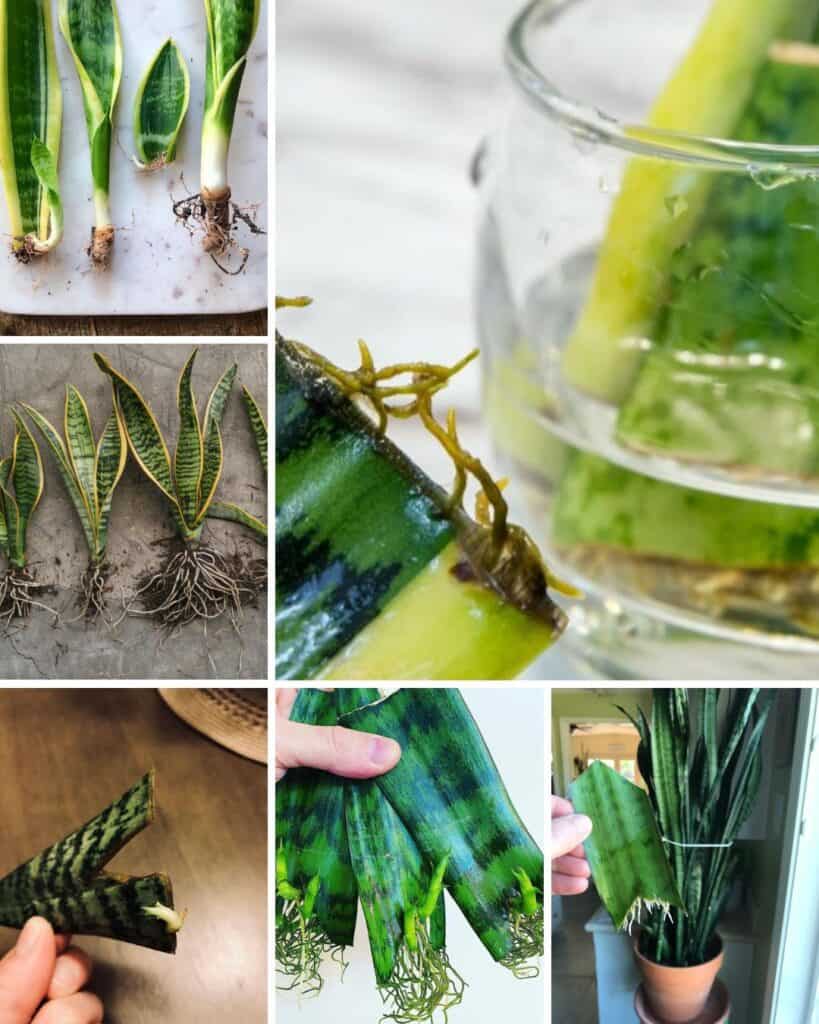

One popular technique is water propagation. Simply cut a healthy leaf into sections and immerse them in water. In a few weeks, roots will begin to form.
Another option is soil propagation. Plant leaf cuttings directly in moist potting soil. Keep the soil slightly damp until roots develop.
Division is also effective for mature plants. Gently separate the roots and replant the sections in fresh soil.
Whichever method you choose, be patient. It can take several weeks or months for new growth to appear. With minimal effort, you’ll soon have new snake plants to enjoy or share with friends.
9) The Biggest Health Issue For Snake Plants Is Root Rot
Snake plants face various challenges, but root rot is the main health issue. This problem often stems from excessive watering.
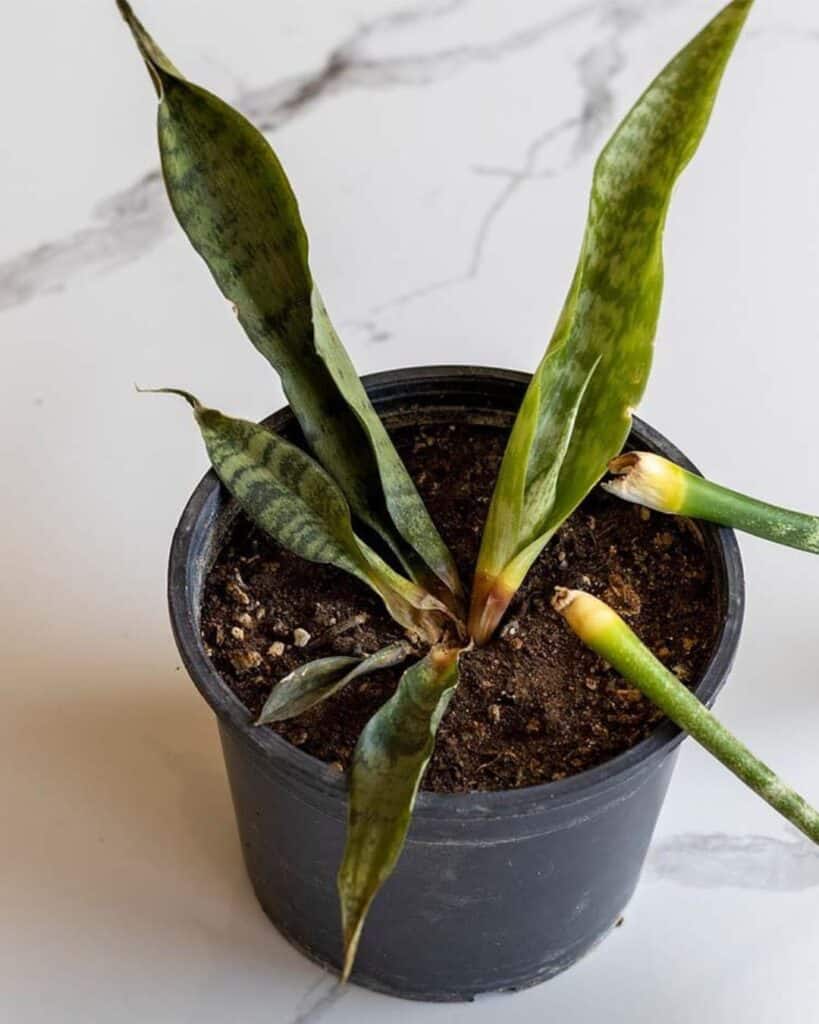

When soil stays too wet, it creates an ideal environment for harmful fungi to thrive.
Root rot can be spotted through several signs. The plant’s leaves may turn yellow or develop soft, mushy spots. In severe cases, the entire plant might start to droop or collapse.
To prevent root rot, proper watering is key. Snake plants prefer their soil to dry out between waterings. They don’t need frequent watering, as thick leaves store water effectively.
If root rot does occur, quick action is necessary. Removing the plant from its pot and cutting away affected roots can help save it. After trimming, replanting in fresh, well-draining soil gives the snake plant a chance to recover.
10) Pruning Snake Plants Is Sometimes Needed
Snake plants can benefit from occasional pruning. This helps maintain their shape and size, especially if they’ve grown too tall or wide for their space.


Pruning also removes damaged or yellowing leaves. This improves the plant’s appearance and health by redirecting energy to healthy growth.
To prune a snake plant, use clean, sharp scissors or pruning shears. Cut leaves close to the soil line for a neat look. It’s best to remove entire leaves rather than partial ones.
Pruning can help control pests and diseases. Removing affected leaves prevents issues from spreading to healthy parts of the plant.
Spring and summer are ideal times for pruning snake plants. This allows them to recover and grow new leaves during their active growing season.
11) Upright And Birdnest Types Of Snake Plants
Snake plants come in two main growth patterns: upright and birdnest. Upright types grow tall with vertical leaves, while birdnest varieties form low, compact rosettes.
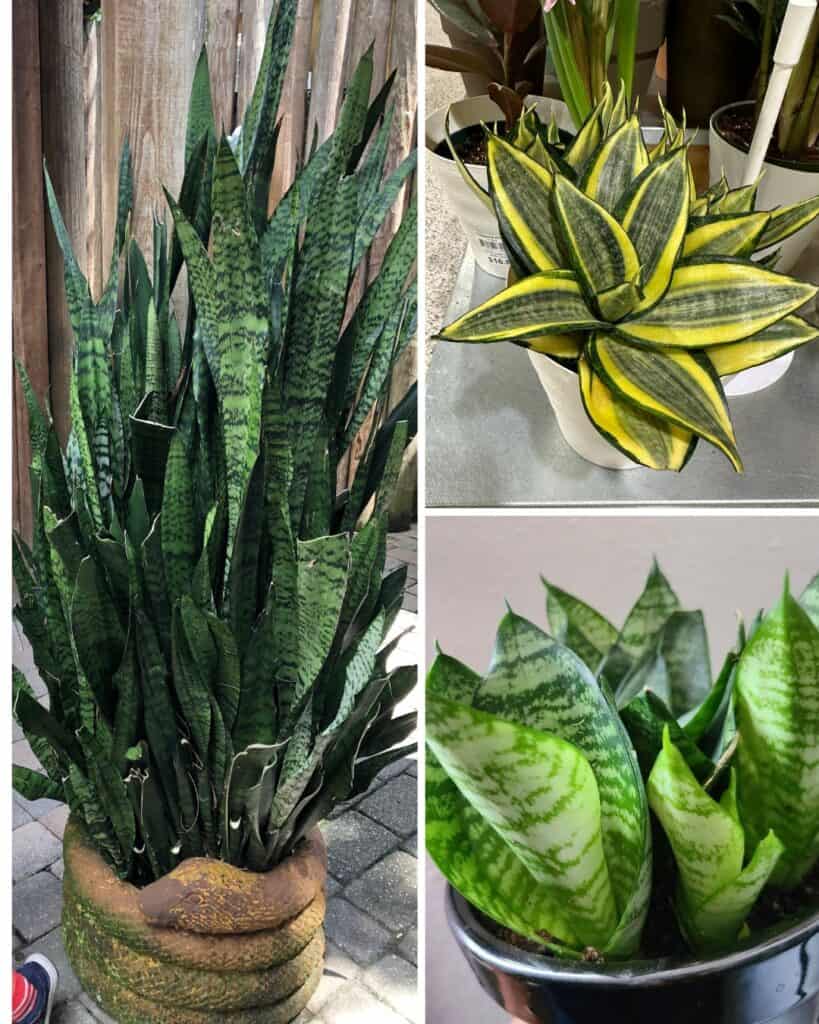

The classic Sansevieria trifasciata is a common upright variety. It has long, sword-shaped leaves that can reach up to 4 feet tall. These leaves often have dark green coloring with lighter green or yellow edges.
Birdnest types like Sansevieria ‘Hahnii’ stay much shorter. They form tight clusters of leaves that resemble a bird’s nest. These compact plants rarely grow taller than 6 inches.
Both upright and birdnest snake plants are easy to care for. They tolerate low light and infrequent watering, making them ideal for busy plant owners or beginners.
12) Snake Plants Grow In High And Low Light Conditions
Snake plants are adaptable to various light conditions. They can thrive in both bright and low light environments, making them versatile houseplants.
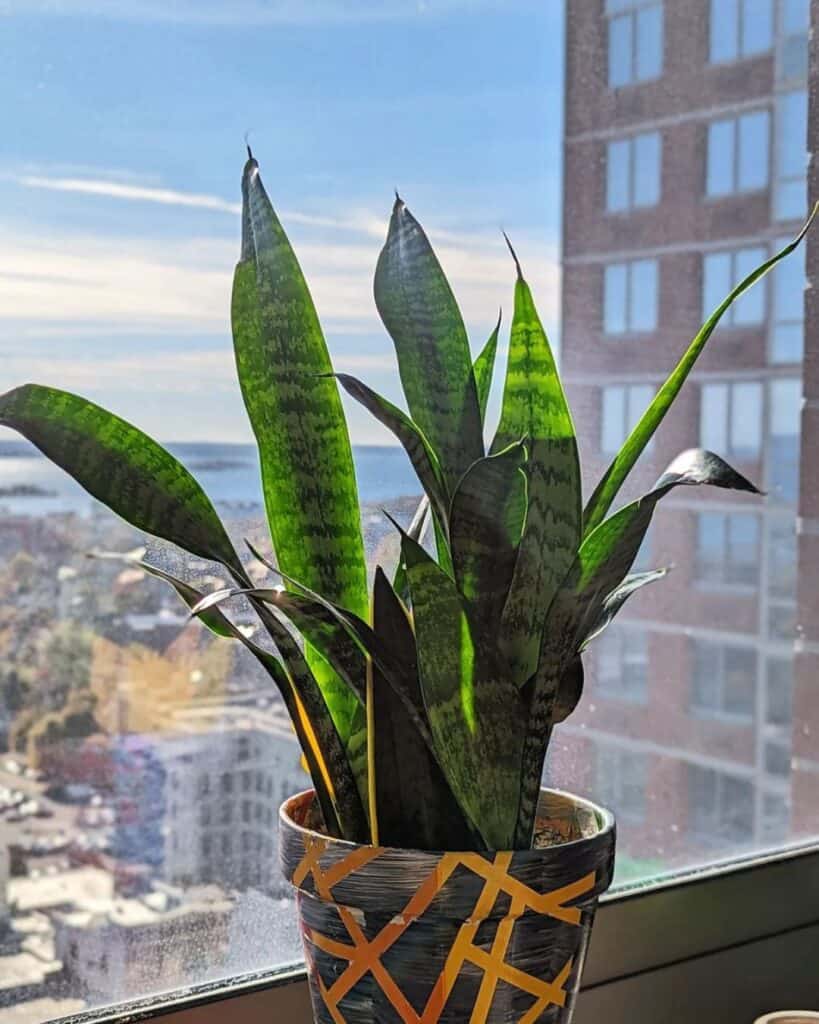

In bright indirect light, snake plants grow faster and produce more vibrant leaves. An east-facing or south-facing window is ideal for optimal growth.
These plants can also tolerate low light conditions, though their growth may slow down. They can survive in darker corners of a room or office spaces with limited natural light.
While snake plants prefer moderate light, they can handle some direct sunlight. However, too much direct sun can scorch their leaves, so it’s best to provide some protection.
For optimal growth, snake plants need about 8-10 hours of light daily. If natural light is limited, artificial grow lights can be used to supplement their light requirements.
Frequently Asked Questions
Snake plants are easy to care for but have some specific needs. They thrive in well-draining soil and can be propagated through cuttings. Here are answers to common questions about snake plant care.
How do I properly repot a snake plant cutting?
To repot a snake plant cutting, use a pot with drainage holes. Fill it with fresh potting soil. Gently massage the roots to loosen them before planting. Place the cutting in the new pot and cover the roots with soil. Water thoroughly to help the plant settle.
What type of soil is best for indoor snake plants?
Snake plants prefer well-draining soil. A succulent soil mix can be used for snake plants. It provides the well-draining conditions these plants need. The mix prevents water from sitting around the roots, which can cause rot.
You can also make your own by combining regular potting soil with sand or perlite. This ensures good drainage and prevents water from sitting around the roots.
Snake plants, like succulents, store water in their leaves and prefer drier soil.
What are the top benefits of having a snake plant?
Snake plants clean indoor air by removing toxins. They’re low-maintenance and can survive in low light. These plants also add a stylish touch to home decor. Snake plants release oxygen at night, making them great for bedrooms.
What steps are involved in caring for indoor snake plants?
Water snake plants every 2-6 weeks, letting the soil dry between waterings. Place them in an indirect light. Keep room temperature between 60-80°F during the day. Fertilize lightly during the growing season. Wipe leaves occasionally to remove dust.
Snake plants, like succulents, store water in their leaves and prefer drier soil.




